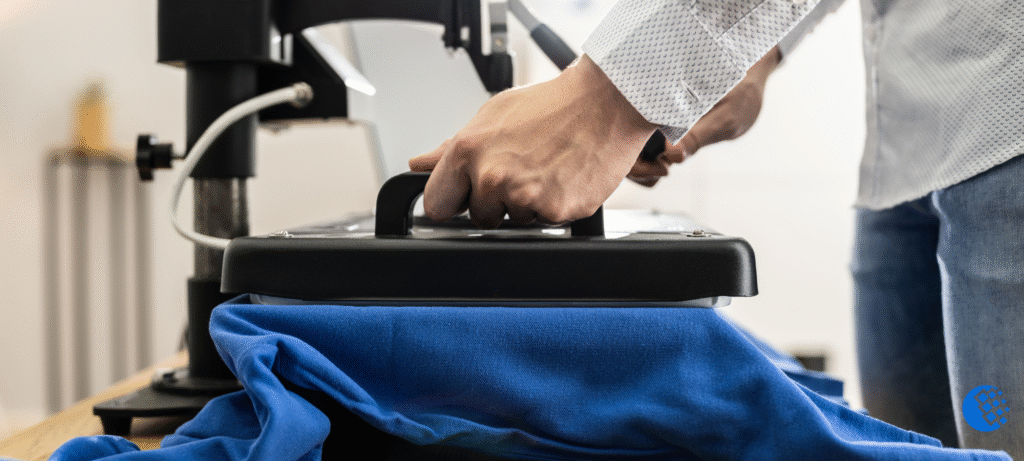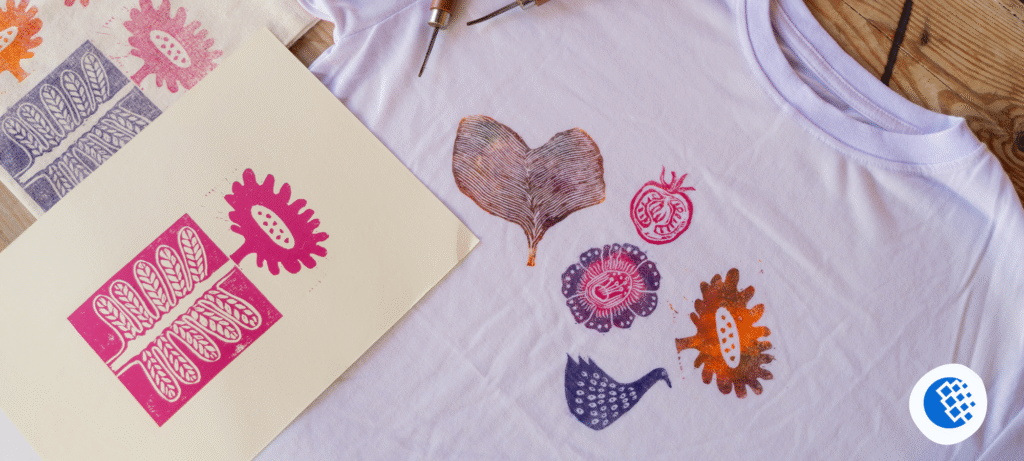For many apparel decorators, heat pressing is one of the most reliable methods for customizing garments, bags, and promotional products. However, inefficiencies such as material waste, inconsistent application, and disorganized production workflows can quickly eat into profit margins. Whether you’re running a small shop in Austin or managing a larger print operation in Chicago, optimizing your heat press process can significantly boost output and lower costs. By adopting the right tools, habits, and production strategies, businesses can minimize wasted materials, enhance quality control, and improve turnaround time. For more information on professional-grade heat transfer solutions and resources, visit FM Expressions, a trusted provider of high-quality custom transfers that help streamline production and elevate consistency across every order.
The Importance of Efficiency in Heat Press Production
A heat press workflow involves several moving parts garment preparation, transfer alignment, heat application, and quality inspection. If any one of these steps is mishandled, it can result in wasted materials or rework. An efficient system ensures that every print is consistent and accurate, which not only saves resources but also enhances the customer experience.
For small businesses, even minor inefficiencies like improper temperature settings or poor alignment—can add up. Each failed print means another shirt wasted, more ink or film used, and more time lost. Implementing a structured workflow reduces these risks and makes it easier for staff to maintain high standards even during peak production periods.
Step 1: Invest in Quality Transfers and Equipment
Not all transfers are created equal. Using low-quality or incompatible materials often leads to errors such as incomplete adhesion, fading, or cracking. By sourcing high-quality transfers, like those offered by FM Expressions, decorators can ensure predictable, professional results every time.
For example, a small shop in Denver noticed that switching from budget transfers to higher-grade ones cut their reprint rate in half. The savings from reduced waste quickly outweighed the slightly higher material cost. Reliable equipment also plays a crucial role—a heat press with even temperature distribution ensures every inch of a large design adheres properly, preventing edge lift and incomplete bonding.
Step 2: Standardize Your Process
Creating a standardized workflow is one of the simplest ways to reduce mistakes. Documenting settings for each fabric type temperature, time, and pressure helps employees avoid guesswork. Having this information visibly posted near the workstation makes it easier for multiple operators to achieve consistent results.
A family-owned print shop in Atlanta implemented laminated reference sheets for each type of garment they produce. Within weeks, they saw a 30% reduction in errors. Consistency breeds confidence, and when operators know exactly what to expect, efficiency naturally improves.
Step 3: Pre-Press Garments to Eliminate Moisture and Wrinkles
Pre-pressing garments for just a few seconds removes moisture and wrinkles, providing a flat, dry surface for the transfer. Skipping this step may lead to poor adhesion and bubbling. It’s especially critical in humid regions like Florida or coastal California, where moisture buildup is common.
While it might seem like a small adjustment, pre-pressing can prevent costly misprints. A local apparel company in Tampa found that adding a three-second pre-press step reduced their misalignment and adhesion issues by nearly 25%. That simple change improved consistency and reduced the number of wasted shirts per batch.
Step 4: Organize Your Workstation for Efficiency
A well-organized heat press station minimizes wasted motion and confusion. Group materials logically—keep transfers, blanks, and tools within easy reach. Label drawers for garment types and sizes to speed up selection.
Many high-volume operations in Los Angeles and Chicago now use rolling carts or shelving systems to keep workflow moving smoothly from printing to pressing to packing. Simple organization adjustments can shave seconds off every order, which adds up significantly across hundreds of prints per week.
Step 5: Use Alignment Tools and Templates
Misaligned designs are one of the most common—and expensive—errors in heat press production. Using alignment grids, T-shirt rulers, or laser guides ensures that every design is centered and straight. Templates are particularly useful for large or complex designs that span multiple panels, such as hoodies or sports jerseys.
An apparel decorator in Portland reported that after introducing laser alignment systems, they eliminated nearly all reprints due to misalignment. The investment paid for itself within the first two months by reducing waste and improving consistency.
Step 6: Calibrate and Maintain Your Heat Press Regularly
Heat presses require periodic maintenance to perform at their best. Inconsistent temperature or uneven pressure can ruin otherwise perfect transfers. Regular calibration ensures accurate heat distribution across the platen.
Shops in colder regions, such as Minneapolis, often notice fluctuating press temperatures during winter. To counteract this, many businesses use temperature test strips weekly to confirm even heat coverage. A simple maintenance routine can extend the lifespan of equipment and prevent unexpected downtime that slows production.
Step 7: Train and Cross-Train Employees
Even the best equipment can’t compensate for untrained operators. Providing structured training ensures that every staff member understands application techniques, fabric handling, and troubleshooting methods. Cross-training employees also creates flexibility during busy seasons when demand spikes.
A custom print shop in Austin trains every new hire on small batches before allowing them to work on full production runs. This practice minimizes costly mistakes and ensures each employee can maintain the company’s quality standards.
Step 8: Reuse and Recycle Where Possible
Sustainability and cost-efficiency often go hand in hand. Reusing carrier sheets for test presses, recycling packaging, and properly disposing of transfer waste can lower operating costs and reduce environmental impact.
Some shops repurpose misprinted garments as test materials or sell them at a discount during clearance events. A business in Seattle even donates minor misprints to local shelters, turning potential waste into goodwill and community engagement.
Step 9: Track Key Metrics to Identify Bottlenecks
Improving efficiency requires measurable data. Track production time, waste rate, and successful application percentage. Once you know where bottlenecks occur—whether in setup, pressing, or inspection—you can target improvements more effectively.
For instance, a print house in New York discovered that most delays occurred between pressing and packing. By assigning one staff member to focus solely on post-press inspection, they increased daily output by 15% without additional equipment.
Step 10: Adopt Ready-to-Press Transfers for Faster Output
One of the fastest-growing trends in the apparel decoration industry is the use of ready-to-press transfers. These pre-printed designs come fully prepared for heat application, allowing shops to skip time-consuming setup steps. They’re ideal for small businesses and custom orders, enabling quick turnaround without sacrificing quality.
A boutique brand in Chicago switched to ready-to-press transfers for its seasonal collections. As a result, they reduced production time by 40% and eliminated nearly all print errors. For operations where time and precision are crucial, pre-made transfers can be a smart investment that enhances both speed and consistency.
Real-World Impact: From Waste Reduction to Business Growth
By applying these best practices, small businesses can dramatically reduce waste and improve profit margins. A family-run T-shirt company in Phoenix implemented just three of the above steps—pre-pressing, alignment guides, and maintenance routines—and cut waste by nearly 35% in six months. With fewer errors and faster production, they expanded into corporate branding orders, growing their annual revenue by 20%.
The takeaway is clear: efficiency doesn’t require expensive upgrades—it’s about refining processes, using reliable materials, and training teams to work smarter.
The Future of Efficient Heat Pressing
As customization demand grows nationwide, decorators who focus on efficiency will stay ahead of the curve. Whether through automation, data tracking, or strategic sourcing, optimizing each stage of the heat press process ensures consistent results and higher profitability.
Partnering with suppliers like FM Expressions provides access to top-tier transfers and expert insights that help apparel businesses across cities like Los Angeles, Denver, and Atlanta streamline production and maintain quality with every press.
For something useful for busy entrepreneurs and production teams, take a look at ergonomic standing desks designed to improve posture, comfort, and productivity in workshop or office environments.





